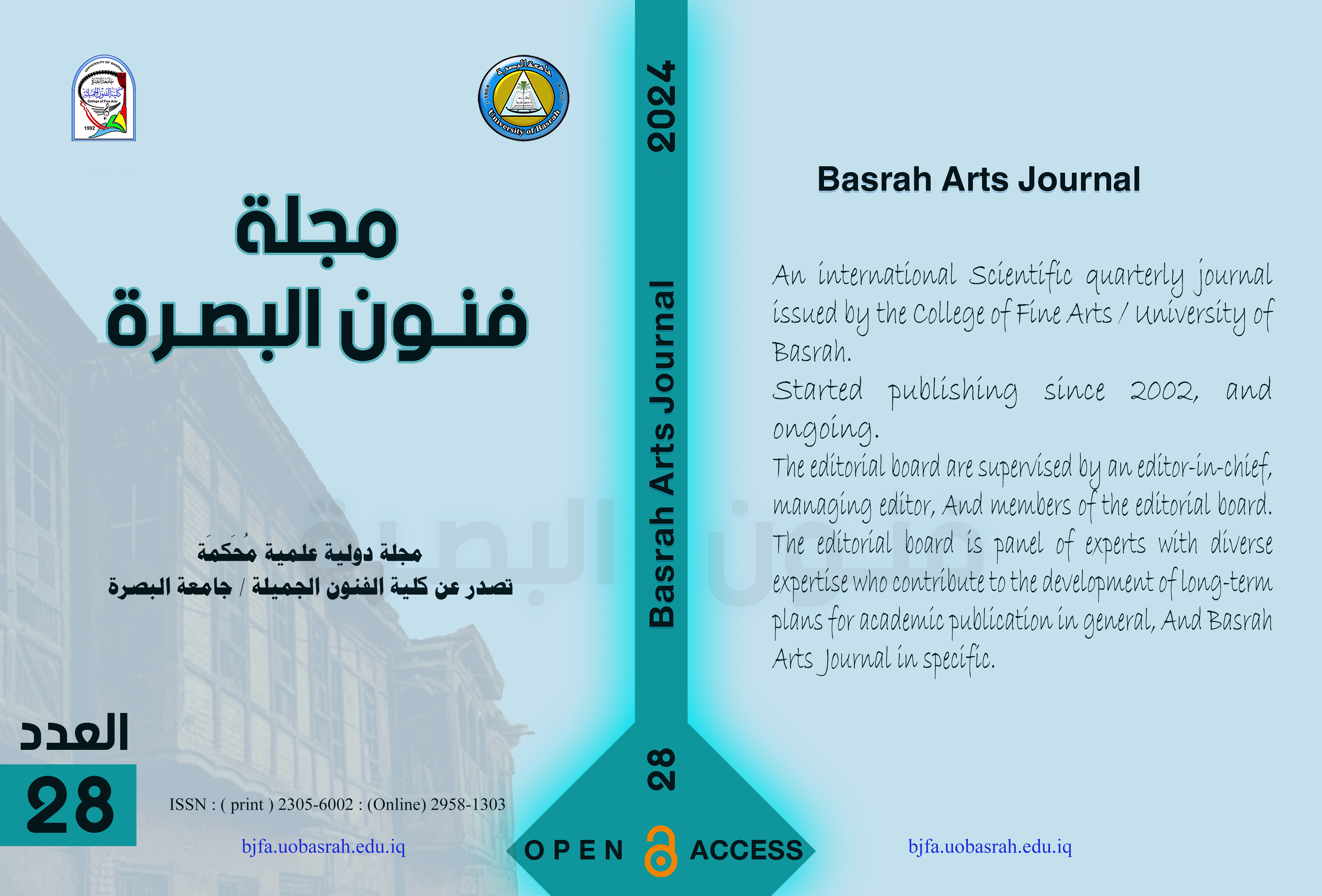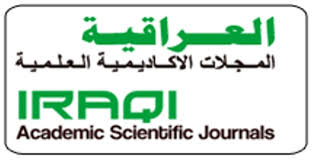The Technical Dimension of the Works of Artists Robert Rauschenberg and Jasper Johns
A Comparative Study
DOI:
https://doi.org/10.59767/2024.02/28.6Keywords:
Technology, Material, Ideas, Discourse, AudienceAbstract
The research entitled (The Technical Dimension of the Works of Artists Rauschenberg and Jasper Jones) dealt with the nature of the concept of technology and the mechanisms of its operation in plastic art, The research come in four chapters. The first chapter: The methodological framework of the research, in which the research problem was presented, the importance of research and the need for it, and the goal and limits of the research. As for the second chapter; The theoretical framework, it contained two sections, The first section focused on technology, its concept and its transformations in the history of art, The second section dealt with (the experience of Robert Rauschenberg and Jasper Johns). The third chapter was concerned with research procedures, where the researcher presented the method used, and the research tool, community, and sample of (3) are a model. As for the fourth chapter, it included the results, conclusions, proposals, and recommendations, and the most important of these results reached by the researcher are: 1- Robert Rauschenberg and Jasper Johns used the collage technique (mixed medium), where the artist created multiple processes between gluing, composition, and color painting, thus presenting mutually reinforcing techniques within one visual field. 2- Most postmodern artists invested in disparate ready – made objects to develop them through color, collage, composition, printmaking, photography, and other techniques, as in models (1,2,3).
References
Abbas, M. A., & Al-kinani, A. A. (2022). Intellectual Implications of the Duality of Mother and Child in the Social Perspective. Journal for Educators, Teachers and Trainers(4), pp. 229–237. doi:https://doi.org/10.47750/jett.2022.13.04.032
Abdulrida, E. A. (2016). The technique of making Super - realism sculptures by Local alternative materials. Al-Academy(75). doi:https://doi.org/10.35560/jcofarts75/5-22
Aldaghlawy, H. J., & Zahra, S. (2022). Flashes in Film Direction. DAR AL FONOON FOR PRINTING & PUBLISHING. doi:https://doi.org/10.5281/zenodo.7779885
Aljumaili, S. (2018). The Openness Of The Visual Text: A Study In The Plastic Arts Overlap. Alfaisal.
Al-Marazeeq, A. J. (2009). Aesthetics of Cultural Criticism. Arab Foundation for Studies and Publishing.
Alrazi, M. A. (1983). Kitab al-Hikmah. Dar Alarabi.
Alshinawy, W. (2011). what is technology. alsaeedy dar.
AlZubaidi, K. (2018). The Arts of Plastic for elements. Almadina house book.
Amhaz, M. (2009). Contemporary Plastic Art. Dar Al-Triangle for Design, Printing and Publishing.
Bowness, A. (1990). plastic arts in new century. tyara u house.
Fouad, Z. (1985). Epistemology And The Natural Position Of Man. Noor Library.
Heidegger, N. (2006). On the Way to Language - Unterwegs zur Sprache. sufiar books.
Hussein, A. (2008). The art of design in philosophy, theory and practice. Part Sharjah: Department of Culture and Information.
Jenzy, H. T. (2020). Body Transformations in Drawings the Artist Muhammed Mehraddin. Academy(95), pp. 143-160. doi:https://doi.org/10.35560/jcofarts95/143-160
Sabeela, M. (2007). Modernity and Postmodernism. Toubkal Publishing House.
Smath, E. (2013). The new arts in the world . neli wa fyrat.
Sulaiba, J. (1971). Transient Utterances. Baerot Publication.
The Theory of Performance2010Almalayeen Dar
Downloads
Published
How to Cite
License
Copyright (c) 2024 Nawras Hameed Majeed (Author)

This work is licensed under a Creative Commons Attribution 4.0 International License.







